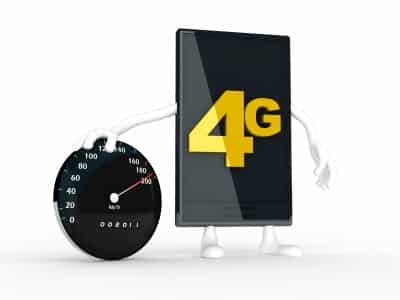Most of us would agree – we were ecstatic when the news about the new 4G LTE connectivity technology went out a few years ago. And we were twice as excited when we heard of upcoming smart phone models that actually supported the new 4G mobile data standard. But today, most of us are probably still holding on to our 3G phones and are contemplating whether or not to jump into the 4G party. What exactly can we expect from this new connectivity standard that promises a “better” mobile Internet experience?
At least three times faster than 3G
While we may already be fairly content with the 3G online experience, let’s not kid ourselves. 3G operates between 384 kilobits per second (kbps), up to a theoretical 56 megabits per second (Mbps). Currently, the fastest observed speed of 3G in real-world applications is only half of that, at 28Mbps, and what we usually get most likely is even lower. How low? A comparative study by Novarum reveals that 3G only came up at a maximum 3.84Mbps, with the top mobile networks in the United States averaging at only around 2Mbps. 4G LTE, on the other hand went up to 9.12Mbps, and on the average, at 6.2Mbps. That’s three times faster, which translates to significantly faster downloads and reduced stream buffering times. In layman’s terms, that means you only wait a third of the time to finish downloading your favorite apps, and enjoy continuous YouTube streaming video without pausing to load, compared to 3G. And that was a year ago. Today, 4G LTE pushes up to a maximum 57.7Mbps, which is a staggering 1500% faster, according to a recent RootMetrics performance report. And 4G LTE coverage is rapidly growing – mobile carrier Verizon Wireless currently services up to 90% of the continental United States with its comprehensive 4G LTE network.
Video chat now made possible
Before, you can only do video chat at home using your broadband Internet connection via Wi-Fi. With 4G LTE’s significantly faster transfer speeds, real mobile video chat is now possible even in the most remote of places, as long as you can receive a cellular signal. This is why 4G LTE-enabled smartphones and tablets are built with high definition front-facing cameras. With 4G LTE, you can enjoy smooth, HD-quality video chat with your family and friends not possible with 3G.
Cloud computing made easier and faster
If you’re using your mobile phone or tablet in your office work, 4G LTE is a very welcome improvement that you can invest on. With its higher download and upload speeds, accessing online resources are more easily within reach. Cloud computing, or using your computing device to remotely run applications, or store, manipulate, and share files, is rapidly becoming more popular. Internet access is becoming faster and more affordable, and mobile devices are becoming more powerful and portable nowadays. With 4G LTE, accessing and sharing your office or even personal files online become quicker and more convenient, you’ll hardly need to lug a mobile hard drive or even a USB flash drive with you.
Multiplayer gaming made better
The experience of playing video games on your living room game console is something that is yet to be achieved on the mobile platform. This is mainly due to the fact that dedicated gaming machines possess a level of precision control that lets one or more players enjoy the gaming experience without so much as a delay or a lag. Data also has to be constantly sent back and forth among players, further burdening the network connection itself. 3G has yet to deliver response times at par with game consoles or wired broadband connections, but 4G changes all these. With the higher transfer speeds, data packets are exchanged quicker, and response times are faster, allowing for a better multiplayer experience.
Connection you can share
Tethering, or turning your mobile phone into a Wi-Fi Hotspot, has already been one of the standard features of 3G-enabled handsets. This feature lets you share your 3G Internet connection with other mobile phones, tablets, notebook PCs, and even handheld game consoles. With 4G, you get a massive speed upgrade, which means that you have plenty to share with other devices. You can enjoy multiple tethered connections, all with just one 4G mobile data account.

Guest Author: Allie Cooper
Allie Cooper is a tech enthusiast who dreams of becoming a primary grade school teacher. She loves writing about TechEd resources using smartphones tablets and other mobile devices as well as social media updates and trending apps fit for learning. Her free time is taken up exploring her passion for playing piano and old films.
